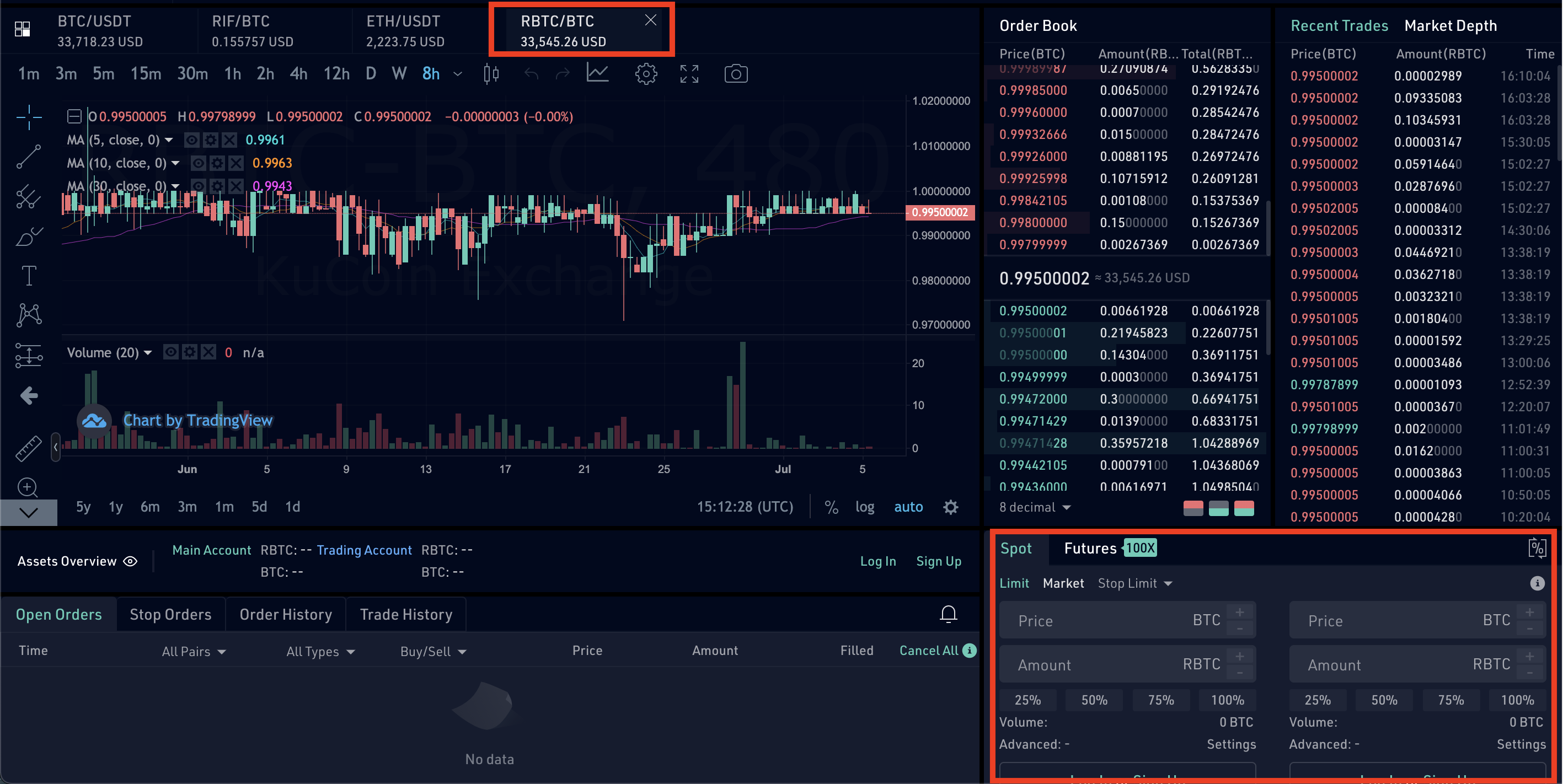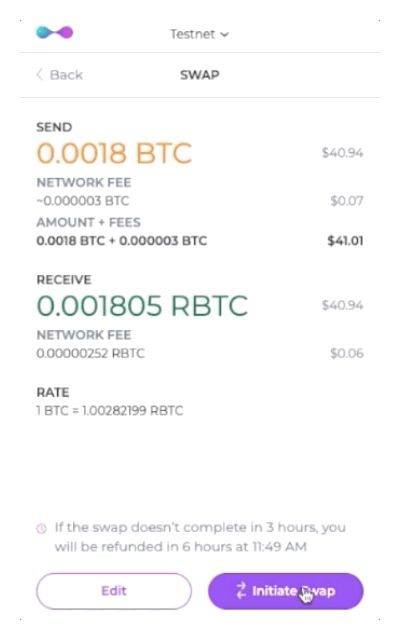How to get RBTC using Exchanges

Centralised cryptocurrency exchanges
Another way to get RBTC is to use the services of centralised cryptocurrency exchanges. These are companies who provide a service which allows its users to trade between one cryptocurrency and another cryptocurrency, or a fiat currency and a cryptocurrency. These exchanges hold assets on your behalf - which means that in the case of cryptocurrencies, they operate crypto wallets on your behalf.
The way that exchanges work will be quite familiar if you have traded on a stock exchange or a foreign currency exchange before. They typically have order books to match buy and sell orders among different users, with the price of a particular pair being the last match in the order book.
How Exchanges work
- Exchanges expose a list of currency pairs.
- Each currency pair is essentially a market where users can buy and sell units of one currency for units of the other currency in the pair
- Price (how many units one currency is “worth” in terms of the other)
- By default, the price is based on demand and supply of buyers vs sellers for that particular currency pair
- In some exchanges select currency pairs have their price determined by the exchange itself, which is common for currencies which are pegged, such as tokens pegged to fiat currency (stablecoins), or for cryptocurrencies pegged to each other (for example BTC and RBTC).
- Exchanges usually charge a fee each time a user buys or sells some currency
- Exchanges usually charge a fee to deposit or withdraw currency between their custodial accounts and your personal accounts
Exchanges with RBTC
There are currently two exchanges that allow users to trade between BTC and RBTC: Bitfinex and Kucoin.
Bitfinex

Watch this video demonstrating how to get RBTC with Bitfinex.
Bitfinex is a digital asset trading platform, it offers order books with top tier liquidity, allowing users to easily exchange BTC and RBTC, plus other cryptocurrencies and tokens. Bitfinex also provides other services, including margin trading, funding, order types, customizable interface, and security.
Kucoin

Kucoin is an exchange and trading platform, where users can exchange BTC and RBTC, plus other cryptocurrencies and tokens. The platform provides users with features such as Spot Trade, Margin Trade, Futures Contracts, Staking, and Lending.
Pros:
- Easier to use compared to the RSK PowPeg.
- Faster than the RSK PowPeg.
- Allow exchanges of smaller amounts of BTC/RBTC.
Cons:
- Requires users to be registered in the exchange and undergo a KYC process.
- Users give custody of the transferred funds to a 3rd party (company operating the exchange).
- Users need to pay fees. Withdrawal fees can be high.
- There are very few alternatives and liquidity.
- Requires liquidity provision.
- Usage of centralized crypto exchanges is on the decline.
Custodial cryptocurrency exchanges
In addition to centralised exchanges, there also is another category of exchange services for that act similar to exchanges, but do not require registration or KYC.
There are currently two such services that allow users to trade between BTC and RBTC: Liquality, and Exolix.
Liquality

Liquality The Liquality Wallet is a browser extension for accessing Bitcoin and RSK applications. This alternative to MetaMask supports multiple blockchains and provides the easiest way to swap between BTC and RBTC, plus transact RSK tokens using built-in one-click atomic swaps.
Exolix

Exolix enables users to exchange BTC and RBTC cryptocurrencies instantly and without registration.
Watch this video demonstrating how to get RBTC with Exolix.
Pros:
- No registration or KYC required.
- Easier to use than the RSK PowPeg.
- Faster than the RSK PowPeg.
- Allow exchanges of small amounts of BTC/RBTC.
Cons:
- Users give custody of the transferred funds.
- Users need to pay fees.
- Usually not suitable for larger transaction amounts.
- Requires liquidity provision.
- Potential regulatory, compliance, or money transmitter risks, for companies providing these services.
Sending and Receiving RBTC
RBTC is the built-in cryptocurrency of the RSK network. This means that (1) you should have a wallet that is configured to work with the RSK network, and (2) that wallet must have some RBTC if you wish to send transactions.
Warning: A common mistake users make when interacting with exchanges is that they confuse RSK addresses/ wallets with Ethereum addresses/ wallets. Their addresses follow the same format, but they are otherwise incompatible. Do not send RBTC to an Ethereum address on an exchange. Similarly, do not send Ether to an RBTC address on an exchange. Your funds will be burnt (permanently lost) should you do so, as blockchain transactions are immutable, and therefore cannot be undone. It is your own responsibility to ensure that you are using the right wallet, and connected to the right network. RBTC can only be sent to and from RSK addresses on the RSK network.
The general approach to use an exchange to convert BTC to RBTC:
- Find the deposit address on the exchange on the Bitcoin network corresponding to your account on the exchange.
- Use your Bitcoin wallet to send BTC to this Bitcoin address.
- Wait for your BTC balance to appear on your account in the exchange
- Find the BTC/RBTC pair in the exchange, and sell BTC to buy RBTC
- Select a withdrawal address from your RSK wallet on the RSK network.
- Use the exchange’s user interface to withdraw RBTC to your RSK address.
The general approach to use an exchange to convert RBTC to BTC:
- Find the deposit address on the exchange on the RSK network corresponding to your account on the exchange.
- Use your RSK wallet to send RBTC to this RSK address.
- Wait for your RBTC balance to appear on your account in the exchange
- Find the BTC/RBTC pair in the exchange, and sell RBTC to buy BTC
- Select a withdrawal address from your Bitcoin wallet on the Bitcoin network.
- Use the exchange’s user interface to withdraw BTC to your Bitcoin address.
Use the user documentation from your chosen exchange for specific guidance on how to do this.